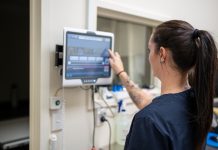Pica is a feeding disorder where the sufferer craves to eat non-food substances such as soil, ice or clay. But who can be affected, what are the causes, and what else is there to know?
Pica is an eating disorder in which sufferers have dietary cravings for eating things with no nutritional value. By definition it involves eating substances which are non-food items. The name originates from the Latin word pica which means magpie – the bird which eats just about anything.
How common is pica?
The condition is most common in people living in institutions in whom the prevalence is between 4-26%. It’s more difficult to establish the prevalence for people living independently, where the condition is often hidden and unrecognised. People may be secretive about what they are eating and the disorder may well remain hidden for a long time before a diagnosis is made.
The condition is on the increase. According to BEAT (the ‘Beat Eating Disorders’ Charity), the number of requests for help with pica has doubled in the past 2 years.
Who is most affected by Pica?
Research has shown that pica most commonly affects young children, pregnant women and those with mental health conditions.
- Adults – In one Eating Disorder Clinic, 4% of adult men and women had pica.
- Children – The disorder is said to affect 10-30% of children between the ages of 1 to 6 years.
- Pregnant women – In one American study 27.8-68% of pregnant women experienced pica.
- Mental health conditions – Pica is more common in those with learning disabilities, autism, obsessive-compulsive disorder, trichotillomania (pulling out hair) and schizophrenia.
What kind of things do people with pica eat?
People suffering from pica may eat a huge variety of things. These include for example – soil, ice, clay, paint, eggshells, coffee grounds, paper, soap, charcoal, hair and even human or animal poo.
Can pica be dangerous?
The effects depend on what has been eaten. It’s pretty harmless to eat ice for example, but eating other things can be highly dangerous.
Paint is a substance that recorded patients with pica have eaten. This can be very dangerous as it contains high concentrations of lead, resulting in lead poisoning. Lead gradually accumulates in the body, causing headaches, stomach pain, constipation, fatigue, convulsions and eventually coma and death.
Eating hair – known as Rapunzel syndrome – can result in hairballs (bezoars) which block the intestines causing bowel obstruction. This is a surgical emergency.
Poo contains pathogenic organisms, including bacteria, viruses and parasites, so eating poo can be dangerous and even fatal.
- Bacteria – E.coli, and salmonella can cause gastroenteritis. Dog poo often contains campylobacter.
- Viruses – Hepatitis viruses may be found in poo.
- Parasitic organisms include cryptosporidium and giardia which cause gastroenteritis. Ascaris is a roundworm which can be acquired by ingesting eggs from contaminated faeces. Toxoplasma, often found in cat poo, can cause severe lung and brain disease.
What are the causes of pica?
The exact cause of pica is not known. However, it is linked to the following –
- Stress and anxiety – Sometimes people develop pica when going through stressful life events such as relationship breakdown or divorce. Psychologists have suggested eating non-food items is a way of controlling intrusive thoughts.
- Mental health conditions – It is more common in those with mental health conditions and may be a type of coping mechanism.
- Poverty – Pica seems more common in those from low socioeconomic backgrounds. It may be related to poor nutrition and dietary insufficiency.
- Mineral deficiency – Those with iron, zinc or calcium deficiency are more likely to develop pica. Anyone with this feeding disorder should be tested for these deficiencies.
- Pregnancy – Pica in pregnancy is thought to be due to a nutritional deficiency, for example, being iron deficient and having iron deficient anaemia. The demand for iron is increased in pregnancy, and morning sickness and vomiting can lead to lower iron stores. Depending on what is being ingested, experiencing this disorder whilst pregnant can be dangerous for the fetus.
- Sickle cell disease – Although experts do not know the reasons why, children and adults with sickle cell disease are more likely to develop pica.
- Brain injury – There are several reports of pica associated with brain injury – often linked to damage to the temporal lobe. It may be due to failure to recognize properly what is being put into the mouth. If there is a memory deficit, the person may not remember what is and what is not edible.
- Cultural issues – Some cultures eat nonfood items as the norm. For example, Aboriginal people regularly eat clay to improve their fertility. In Georgia, many Black women commonly eat dirt.
How to diagnose pica?
By definition, the non-food craving must have been present for over a month. The person must be old and mentally mature enough to realise that what they are eating is not a food substance. There should be no cultural norm that means they believe eating this substance is acceptable.
What current treatments are there for pica?
The treatment of pica depends on what is being eaten. The patient may need blood and urine tests, x-rays and scans, and other tests such as ECG or EEG. Any poisoning needs specific therapy. They may need a mental health assessment and then treatment for any mental health conditions diagnosed.
- Any vitamin or mineral deficiencies need to be corrected – for example – a person with iron deficiency needs to be given oral iron supplements.
- Encourage the sufferer to throw away pica items themselves so they are in control.
- Reward good behaviour.
- Keep their hands busy with other tasks so they don’t constantly fiddle with food and think about eating.
- Make sure none of the pica items are available wherever possible.
- Instead, supply appealing nutritive alternatives such as strawberries.
Cognitive behavioural therapy (CBT) can be used for those with eating disorders, including pica. This is a type of talking therapy undertaken over several sessions with a trained therapist. The patient learns more about their condition and is helped to develop coping strategies.
The prognosis for those experiencing Pica
Most children will eventually grow out of pica. But those with learning disabilities will need to be taught what a normal part of the diet is and what is not.
This form of feeding disorder should be taken seriously and properly investigated and managed.
For more information on feeding disorders
- National Autistic Society – Understanding and managing pica
This piece was written and provided by Dr Deborah Lee, Dr Fox Online Pharmacy












This post is very easy to read and understand without leaving any details out. Great work! Thanks for sharing this valuable and helpful article.